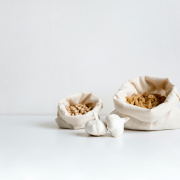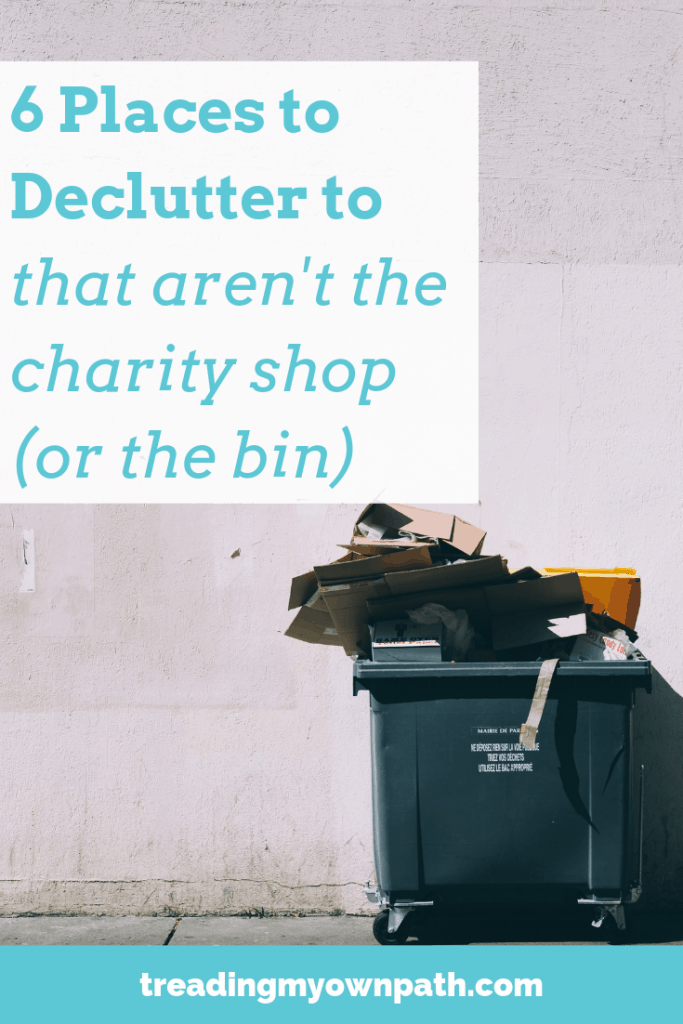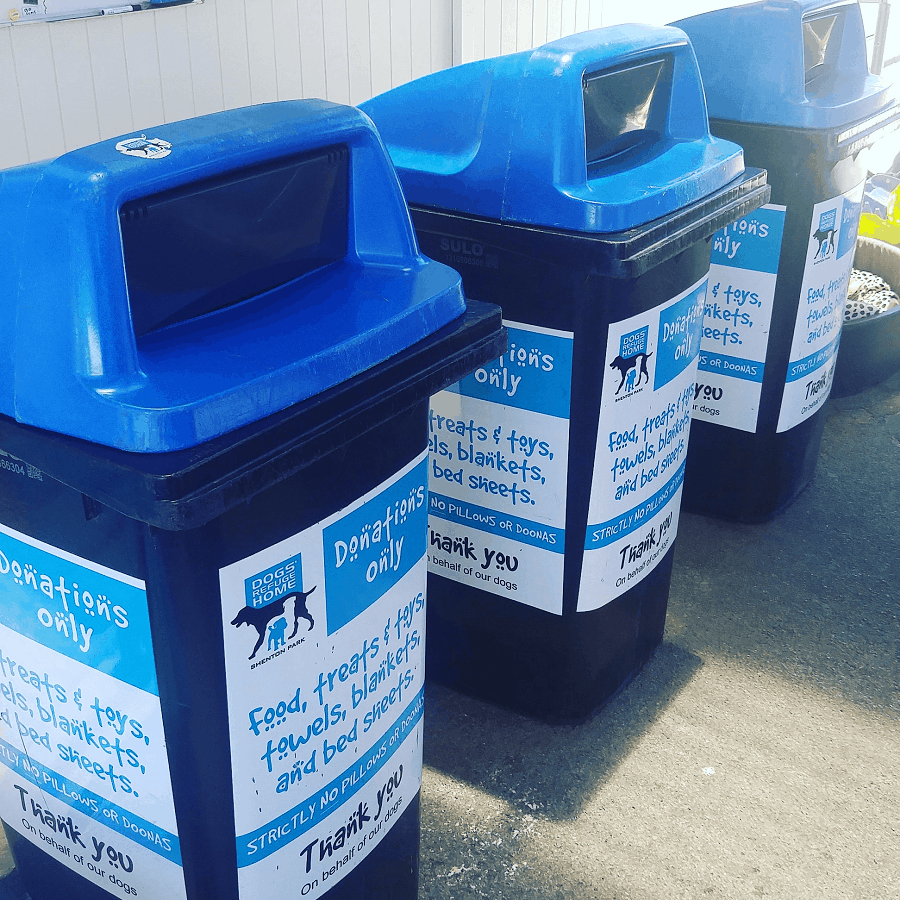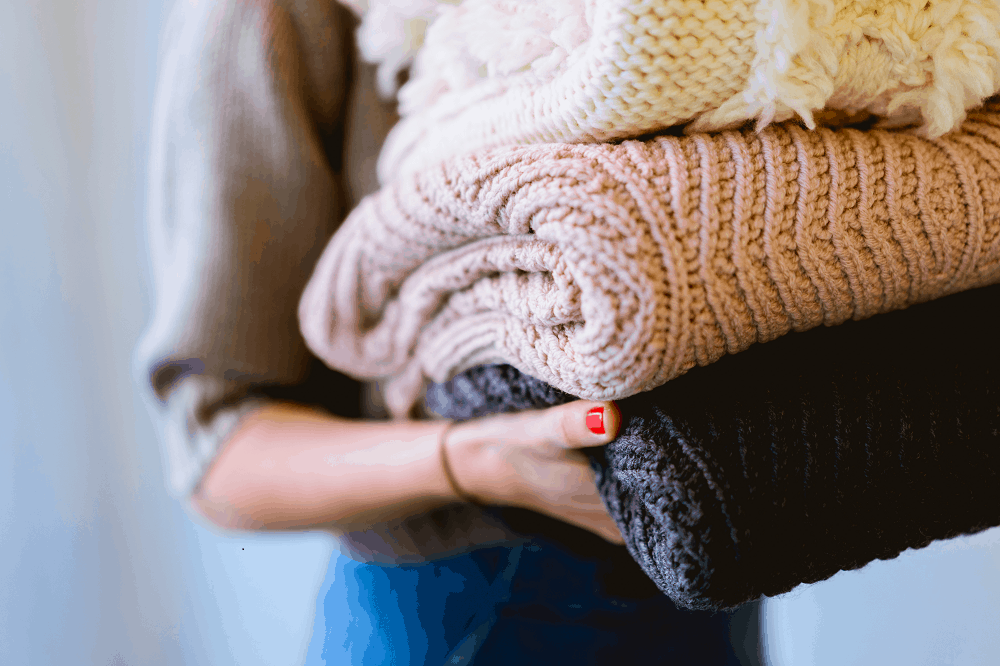5 Mindset Shifts for Zero Waste Living
When I started my journey to zero waste living back in 2012, I didn’t actually know that’s what I was doing. I’d never heard of the term ‘zero waste’ and although Bea Johnson was already writing her blog Zero Waste Home, I hadn’t heard of her, either.
I was simply interested in reducing my rubbish, which had started out as a plastic-free adventure, and expanded when I went to a recycling facility for the first time and saw all how much other single-use packaging (cardboard, cans, tins, etc) was amassed in just a single day, all waiting to be baled and shipped to Asia.
Fast forward seven years, and the zero waste lifestyle is a growing movement that has definitely captured the hearts, minds and imaginations of many. And by many I not only mean those of us who want to reduce our footprint and take responsibility for our waste, but the marketers that have embraced the zero waste movement as a way to sell us more stuff that we probably don’t need.
No wonder then, that critics claim zero waste is expensive. Marketing exists to sell us stuff, and those marketers are hard at work telling us we need to purchase all kinds of things to be zero waste.
Don’t get me wrong. I’ve purchased some things which have definitely helped me reduce my waste. Most zero waste advocates have bought something. But buying something (we’ve all done it) isn’t to be confused with embracing a consumer mindset, or turning the zero waste lifestyle into yet another way to consume more than we need.
I buy something if I need it. That in no way means that it’s an essential for anyone else, that everyone else needs it, or that I’m encouraging others to make a purchase.
I think anyone who is trying to reduce their waste and live more sustainably would say the same.
Because zero waste isn’t the path to buying more things. At the start, it’s a bit of a rite-of-passage, the buying of ‘zero waste’ things – whether we truly ‘need’ them or just think we do.
But in time we start to settle into a different mindset. The true zero waste mindset.
I was thinking about how my mindset has shifted since embracing the zero waste lifestyle. Here’s five zero waste mantras that I hold up as true to the ethos of living with less waste. No buying of shiny things included.
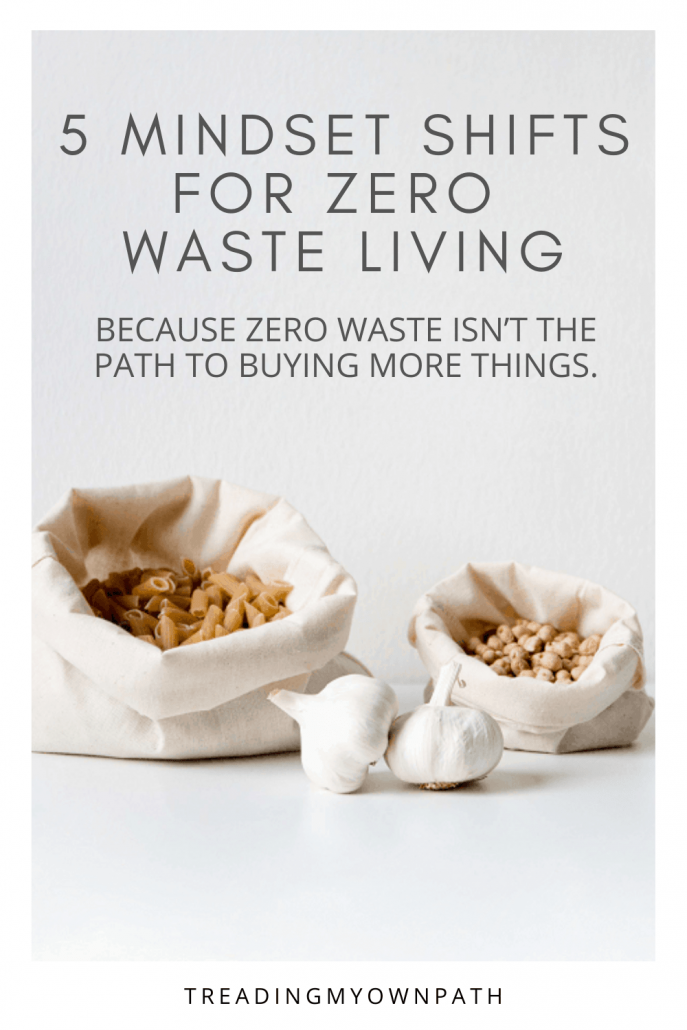
Everything is a Resource
Everything is a resource. Whether we’re talking about ‘stuff’, the packaging the stuff came in, the resources used to make it, ship it and get it to our homes, the people who worked to make this happen, the space it now takes up in our homes – every step requires materials, time, energy and land.
It’s no longer enough for me to just look at the product, see a lack of plastic packaging and consider it to be zero waste. I need to look at the whole picture… because waste happens before the item gets to me.
I can’t know all the answers, but I can make best guesses. Where did it come from? How was it made? Who made it? How was it transported? Is it made to last? Is it recyclable? How can I dispose of it, if I no longer need it?
This tends to lead me to holding off purchasing straightaway (waiting helps me feel sure that it’s something I truly need), borrowing if that’s an option, or choosing second-hand.
Value What You Have
Value isn’t just about how much they cost or what they are worth in monetary terms. Value is about seeing how much effort and/or resources went into making those things, and also how much benefit they bring to us (perhaps joy, perhaps because they save time, perhaps because they make life easier).
Zero waste means I respect the things I do buy and the things I own much more than I might have in the past, and I look after my things properly.
For example, knowing that a single pair of jeans takes 7,600 litres (2000 gallons) of water to make doesn’t stop me buying jeans: there is nothing more comfortable, surely, than a good pair of jeans? But it makes me prioritise buying second-hand (or ethical, well-made) jeans, ensures I wear them often and means I won’t go shopping for replacement jeans until my current ones are completely worn out.
Zero waste means embracing scuffs, chips, cracks, worn parts or dents as part of an item’s story rather than seeing them some kind of defect.
Not to mention, it means ensuring that those things I no longer use are not left languishing in my home – they still have value to someone, and to keep them is a waste of resources someone else could be using.
Embrace Making Do
Resisting the temptation to buy stuff can sometimes be a struggle. There’s always something new and shiny out there, stuff that will save us time and make life easier, things that look beautiful. Zero waste is about resisting the urge to accumulate yet more stuff, and make do with what we have.
That goes for second-hand, too! Buying second-hand is great when we need something and can’t make do with what we have. Buying second-hand things that we don’t need (but are oh-such-a-bargain) and rarely use is not very zero waste.
Sure, sometimes we need to buy stuff. But the most zero waste thing is always going to be making do. The more we make do, the more we reduce our footprint.
Fix What is Broken
A big part of making do and reducing waste is fixing anything that breaks, rather than seeing it as an excuse to chuck it in the bin and head to the store to buy another.
Sometimes it is something we can fix ourselves – maybe we just need to buy some glue or a spare part. Sometimes we need to borrow a tool. Other times we might not have the skills or knowledge, but we know someone who does (probably that person we borrowed the tools from).
Occasionally we have to pay someone to fix things. What a great investment! Keeping our stuff out of landfill, reducing demand for new resources, ensuring extremely useful skills stay alive and paying someone for their time and knowledge. So many benefits to be had at once.
I’ve got a pair of boots that I purchased circa 2010. My guess is that at the time they cost around £65 (AU $110). To date, I’ve probably spent twice as much repairing them – definitely upwards of $200 – over the last 9 years. They’ve been into the shoe repair place more times than I can count, and have had soles replaced, heels fixed, bits glued back on, stitches re-sewn, a toe-cap put in, a zipper changed, laces swapped.
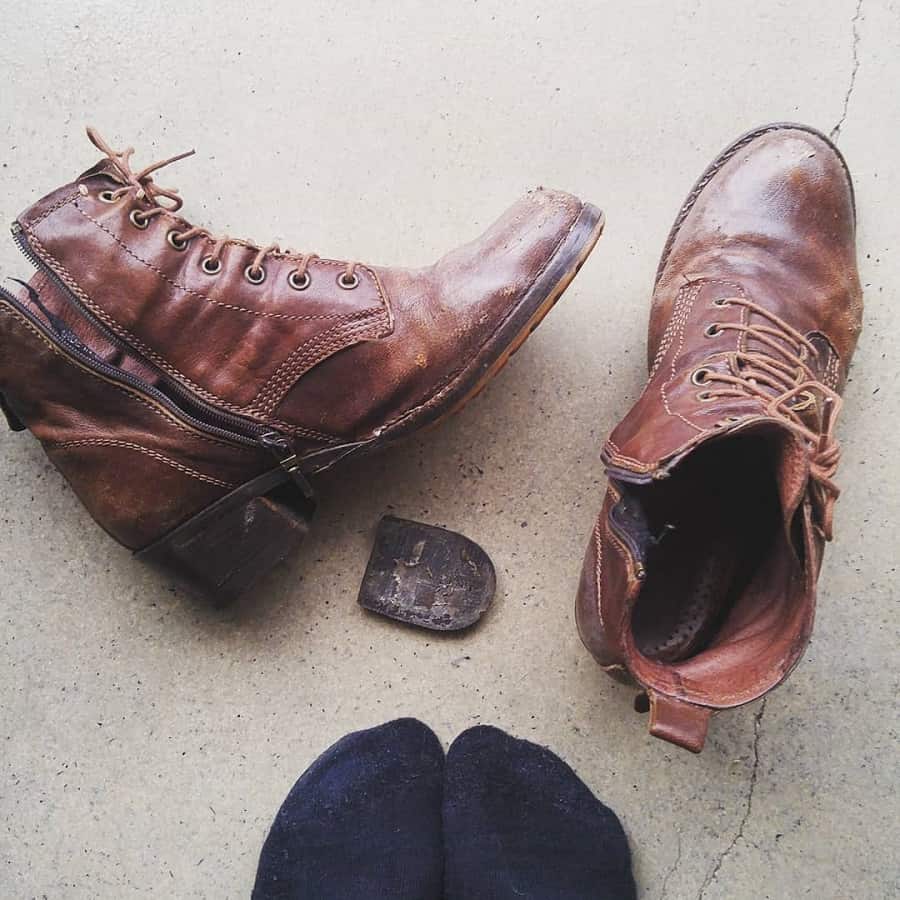
It’s been worth it to save resources (no new boots purchased in the last 10 years), save time (no shopping for new boots required), and also keep my favourite and most comfortable pair of boots on my feet.
Celebrate the Old
In the same way that I used to ‘upgrade’ things before they really needed to be replaced and feel excited by the thought of new things, now I’m excited by the thought of making things last as long as possible.
Instead of feeling any kind of embarrassment about how old things are, I feel a sense of pride that I’m still using them and that they’ve lasted.
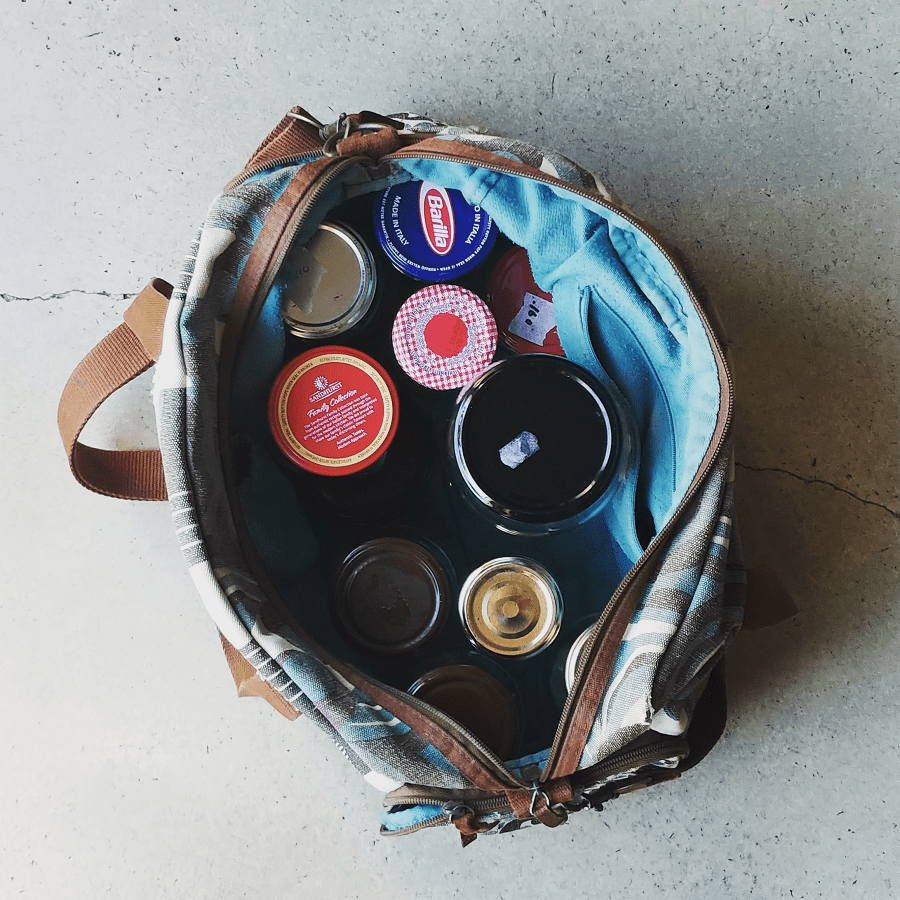
This bag was purchased around 2005. I use it every time I make a trip to the bulk store. It’s my favourite shopping bag, even though it wasn’t designed (or purchased) for that purpose – I barely knew what a bulk store was when I bought it!
There’s nothing I consider more personally satisfying than responding to ‘oooh that’s nice, is it new?’ with ‘nope, it’s x years old and I got it from the charity shop!’
Old doesn’t mean antiques, either – at least, not in my house. It means stuff I’ve owned for a while. Most of it is monetarily worthless, but it still provides me with heaps of value.
Imagine if, as a society, we shifted from feeling proud of how new things were, to how long we’d made the old things last?
Zero waste is about valuing resources, whether they be new or old. It’s about reducing what we buy, and we do this by rethinking our relationship to our stuff and respecting the things we have and the people who made them. At least, that’s how it happened for me.
Now I’d love to hear from you! What do you think about these zero waste mantras? Are there any you’d add? Any you disagree with? Any other thoughts? Please share in the comments below!

